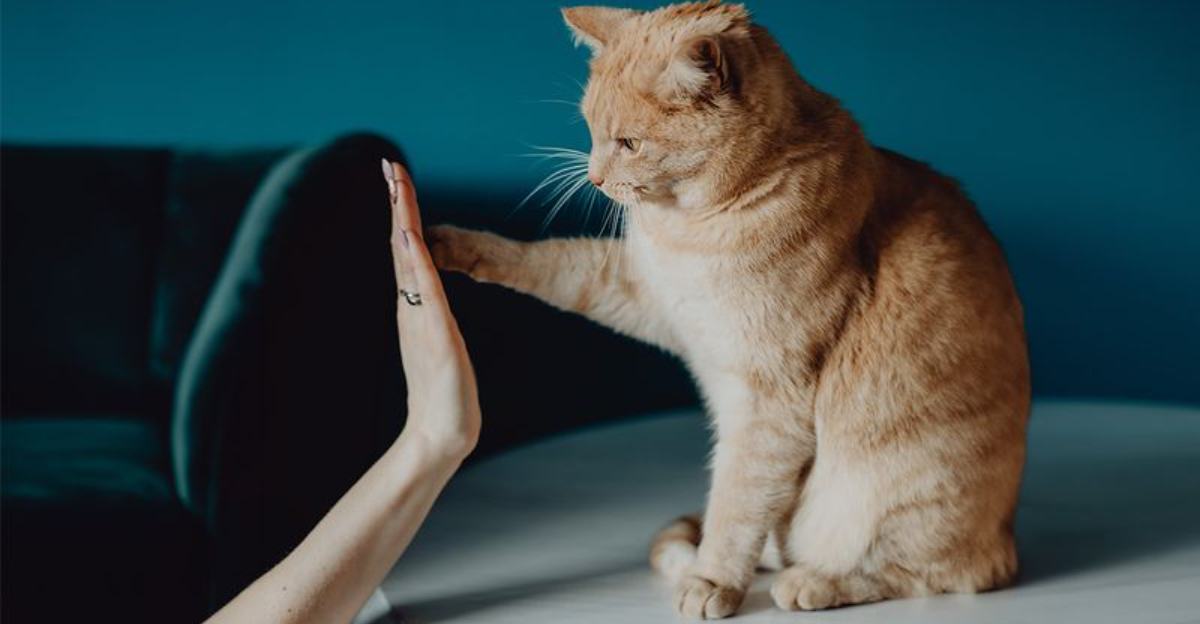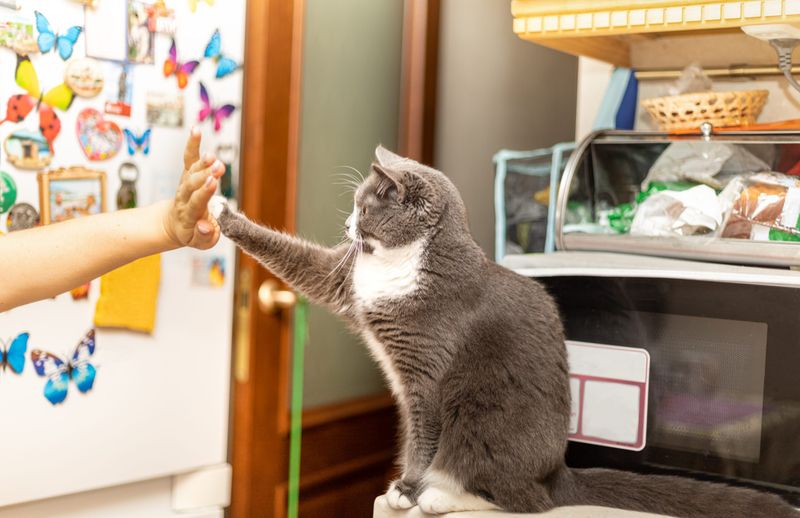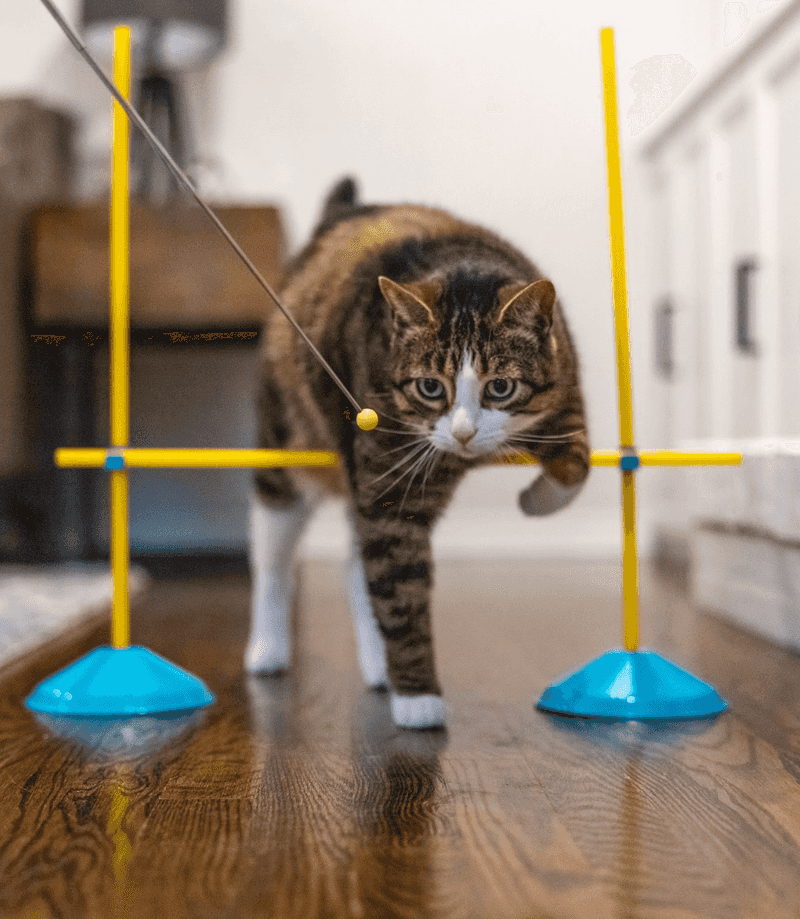📖 Table of Content:
Training a cat might sound like a contradiction to some, but it’s not only possible—it can be an incredibly fulfilling experience. While cats are famously independent creatures, they are also intelligent, curious, and capable of learning a wide range of behaviors, from using a litter box to walking on a leash or performing tricks. When approached thoughtfully, training becomes a way to deepen the bond between you and your feline companion while enriching their environment and boosting their confidence.
Many cat owners assume that training is only for dogs, but that myth couldn’t be further from the truth. With the right techniques and consistent communication, cats can learn commands, routines, and even household rules. What’s essential is understanding how cats think and respond to motivation. Unlike dogs, who may aim to please, cats are more likely to ask, “What’s in it for me?” That’s why successful training hinges on tapping into their natural instincts and preferences.
Whether you’re just starting with a new kitten or working with an older rescue cat, there’s always room for growth and learning. These ten strategies will help you get the most out of your training sessions—making them enjoyable, effective, and respectful of your cat’s unique personality. Let’s explore the best ways to turn learning into a positive adventure for both you and your feline friend.
1. Keep Sessions Short and Sweet
Short training sessions work best because cats tend to have short attention spans. Instead of trying to teach too much at once, aim for focused bursts of activity lasting around 3 to 5 minutes. You’ll see better results by training multiple times a day rather than pushing for long durations. Breaks are not just helpful—they’re necessary to avoid overstimulation. As soon as your cat starts looking away, grooming excessively, or walking off, it’s a sign they’ve had enough. Ending on a good note ensures the experience stays positive and builds excitement for next time. Remember, the goal is quality, not quantity, in every session.
2. Use Positive Reinforcement
Instead of scolding unwanted behavior, reward the actions you want to see repeated. Positive reinforcement could come in the form of treats, playtime, gentle praise, or even a favorite toy. Every time your cat sits on command or touches a target, offer something they love immediately afterward. This strengthens the connection between action and reward in their mind. Cats are more likely to repeat behaviors that consistently lead to something pleasant. Keep rewards varied to maintain interest—what works today may be boring tomorrow. Eventually, you’ll find your cat offering good behaviors without prompting, just to earn your attention.
3. Be Consistent
Every member of your household needs to use the same commands and gestures when interacting with your cat. Otherwise, you risk confusing your feline with mixed messages. Use the same word for each command every single time, and pair it with a specific tone or hand signal. Consistency creates predictability, and predictability builds trust. Over time, your cat will associate your cues with clear expectations and outcomes. If someone else in the household breaks the pattern, gently remind them of the established routines. The more consistent your approach, the faster and smoother your cat’s progress will be.
4. Train in a Distraction-Free Environment First
When you’re introducing a new behavior or command, choose a quiet space without distractions. This gives your cat the best chance to focus and learn without unnecessary interruptions. Close doors, turn off TVs, and remove toys not being used in training. Once the behavior is reliably performed in this controlled setting, you can begin to introduce mild distractions gradually. Think of it like leveling up in a game—each stage increases in complexity. Cats need time to generalize skills across different situations and environments. By starting simple and increasing difficulty, you’re setting your cat up for long-term success.
5. Use the Right Treats
Not all rewards are created equal, and finding the perfect treat for your cat can make a big difference. Think small, soft, and irresistibly tasty—something your cat doesn’t get outside training. A good reward should be easy to consume quickly to keep the momentum going. Some cats may prefer a lick of tuna over a kibble; others might value play with a feather wand. Try a few different options to discover what truly excites your feline learner. Once you’ve found their favorite motivator, reserve it only for training sessions. That way, it remains special and keeps your cat engaged and eager to work.
6. Train Regularly
Like with any learned behavior, repetition and consistency build mastery. Make training a daily habit—even if it’s just a minute or two between meals or playtime. Small, frequent sessions reinforce learning far more effectively than occasional marathons. Treat training as a part of your cat’s enrichment routine, not just a separate chore. You can even weave it into daily activities like feeding or grooming. By making training part of the rhythm of life, your cat will begin to look forward to these moments. The more familiar the process, the more confident and responsive your cat becomes.
7. End on a Positive Note
Finishing a training session with success helps your cat feel confident and keeps them motivated for the next round. Even if the session wasn’t perfect, find something your cat did well and reward it. This might be a simple behavior like making eye contact or sitting calmly. Avoid pushing past your cat’s limits or ending after a failed attempt—that can create frustration or avoidance. Instead, wrap things up while the energy is still upbeat and cooperative. Your cat will associate training with accomplishment and fun rather than stress. Over time, this approach builds a resilient and enthusiastic learner.
8. Stay Patient and Calm
It’s perfectly normal for progress to be uneven—some days will be smoother than others. If your cat seems disinterested or distracted, take it as a cue to pause rather than push. Getting frustrated will only make the process stressful for both of you. Use a gentle tone, maintain a relaxed posture, and breathe through any setbacks. Cats are sensitive to human emotions and will mirror your tension or ease. Instead of seeing mistakes as failures, treat them as opportunities to learn and adjust. Patience isn’t just a virtue—it’s your greatest tool in fostering trust and responsiveness.
9. Make it Fun
Turn training into a game by injecting energy, excitement, and curiosity into the session. Use upbeat voices, novel toys, or playful rewards that get your cat’s tail twitching with interest. This approach taps into their natural hunting and exploring instincts, making the learning experience more compelling. Variety keeps things fresh, so change up the rewards, locations, or even props from time to time. Avoid repeating the same trick for too long—cats appreciate novelty. When your cat has fun, they’ll participate more willingly and retain what they learn better. The goal is not just obedience, but joy in the shared experience.
10. Know When to Ask for Help
Sometimes, even your best efforts might not yield the results you hoped for, and that’s okay. If your cat displays fearful behavior, aggression, or unresponsiveness despite consistent work, consider consulting a feline behaviorist or vet. Experts can identify underlying issues, from anxiety to medical conditions, that might be hindering progress. You’re not expected to have all the answers, and getting support can dramatically shift the training dynamic. Many behavior challenges are resolvable with the right insight and approach. There’s no shame in seeking help—on the contrary, it shows commitment to your cat’s well-being. In some cases, a little guidance can transform everything.










